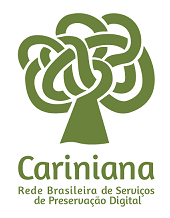Características morfogênicas do capim-Tanzânia consorciado com Estilosantes Campo Grande ou adubado com nitrogênio sob pastejo
DOI:
https://doi.org/10.5433/1679-0359.2015v36n4p2739Palavras-chave:
Consorciação, Lotação contínua, Morfogênese, Panicum maximum, Taxa de alongamento foliar.Resumo
Objetivou-se avaliar as características morfogênicas e estruturais do capim-Tanzânia (Panicum maximum cv. Tanzânia) consorciado com Estilosantes Campo Grande (Stylosanthes capitata e Stylosanthes macrocephala) ou adubado com nitrogênio. O pasto foi manejado sob lotação contínua e taxa de lotação variável. Foi utilizado delineamento experimental em blocos ao acaso com parcelas subdivididas, com três repetições. Os tratamentos foram: capim-Tanzânia + Estilosantes; capim-Tanzânia + 75 Kg N.ha.ano-1; capim-Tanzânia + 150 Kg N.ha.ano-1 e capim-Tanzânia + 225 Kg N.ha.ano-1. Foram utilizados ureia e nitrato de amônia como fonte de nitrogênio. As avaliações morfogênicas foram realizadas na primavera e no verão. Foram avaliados 15 perfilhos por piquete, duas vezes por semana, durante quatro semanas por estação em estudo. As características morfogênicas, exceto a taxa de alongamento foliar (TAlF), não foram influenciadas pela adubação nitrogenada ou consórcio com Estilosantes. Os maiores valores para esta variável foram observados na primavera, nas pastagens adubadas. Desta forma, conclui-se que a adubação nitrogenada influencia a taxa de alongamento foliar (TAlF) do capim-Tanzânia, e este quando é cultivado em consórcio com o Estilosantes Campo Grande apresenta características morfogênicas semelhantes quando adubado com nitrogênio, à excessão da taxa de alongamento foliar.
Downloads
Downloads
Publicado
Como Citar
Edição
Seção
Licença
Copyright (c) 2015 Semina: Ciências Agrárias

Este trabalho está licenciado sob uma licença Creative Commons Attribution-NonCommercial 4.0 International License.
Semina: Ciências Agrárias adota para suas publicações a licença CC-BY-NC, sendo os direitos autorais do autor, em casos de republicação recomendamos aos autores a indicação de primeira publicação nesta revista.
Esta licença permite copiar e redistribuir o material em qualquer meio ou formato, remixar, transformar e desenvolver o material, desde que não seja para fins comerciais. E deve-se atribuir o devido crédito ao criador.
As opiniões emitidas pelos autores dos artigos são de sua exclusiva responsabilidade.
A revista se reserva o direito de efetuar, nos originais, alterações de ordem normativa, ortográfica e gramatical, com vistas a manter o padrão culto da língua e a credibilidade do veículo. Respeitará, no entanto, o estilo de escrever dos autores. Alterações, correções ou sugestões de ordem conceitual serão encaminhadas aos autores, quando necessário.




















